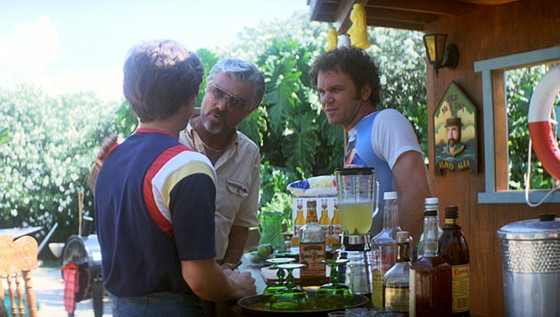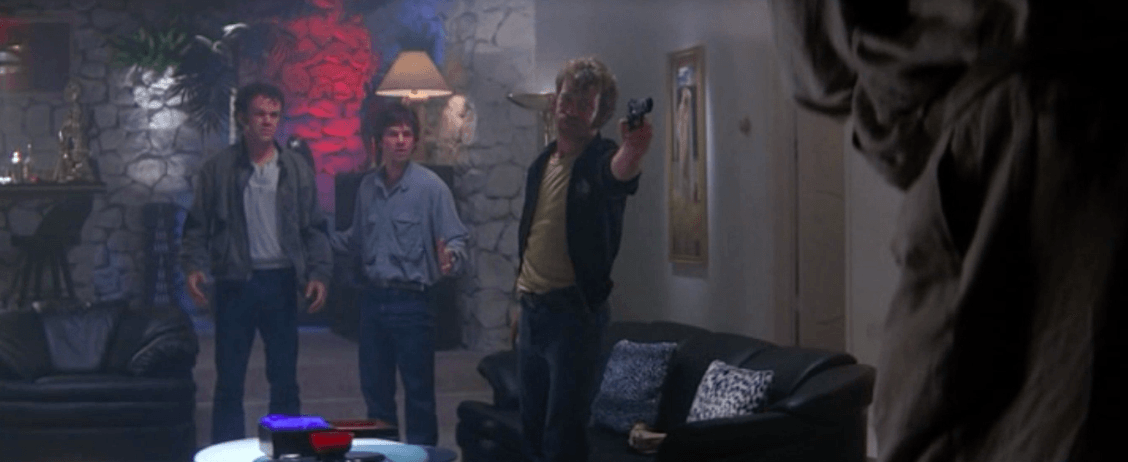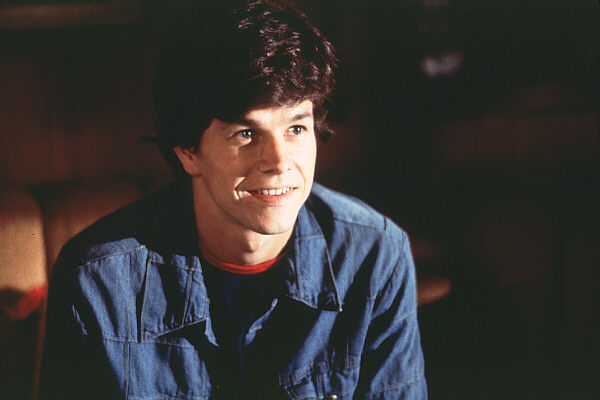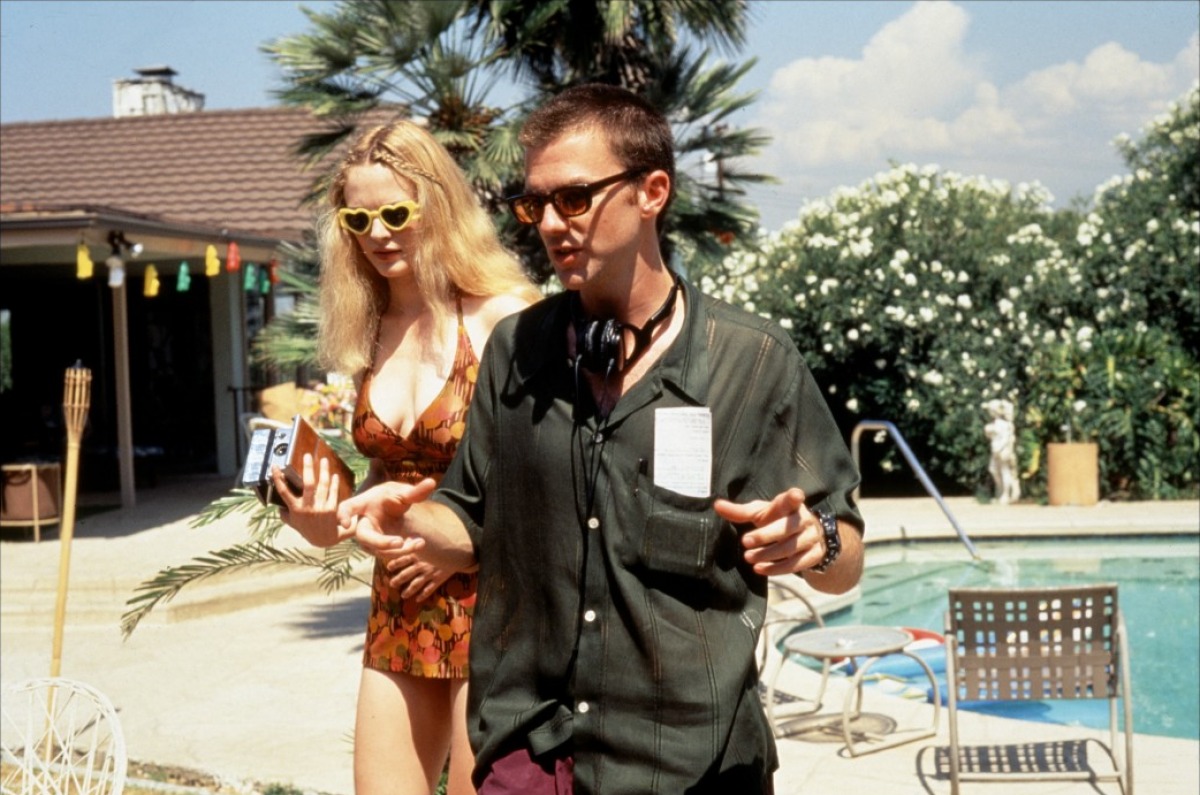5. The Script

Editor Dylan Tichenor noted in an interview that Anderson writes his scripts on Word and puts in camera angles and movements. Both which are mostly no-no’s, but Anderson can get away with it. Anderson has said that he writes in the camera angles and movements into his scripts so that the studio knows exactly how he’ll shoot the film.
However, in doing this he also tells the story visually. Once the process moves from script to screen the camera is the narrator. It tells us where to look, how to feel and when to do these things. Of course, directors who write their own scripts are allowed to do this as it preserves their vision and how they’ll execute it.
Anderson has also said that he writes plainly because a lot of his actor friends told him that they just read their dialogue. They don’t care about the actions, so what’s the point in writing a beautifully worded script if they’ll only read the dialogue.
Structure aside, what makes “Boogie Nights” work is the script. Before he allowed the improvisation he does today, Anderson would mostly follow his scripts tightly. What you see is what was written. The script gives all the characters heart. Each character is so fully realized that they could have their own film.
However, short of their screen time, we know everything we need to know about these characters. The story weaves in and out of different situations and times without any indication of a straight plot. But the story does move forward. Some scenes can feel random with their casual dialogue and shenanigans but they tell us more than we may notice.
It’s the little details that give a past to the characters without spelling it out. It’s the little details that foreshadow what will happen without spelling it out. Anderson is not as well known for his scripts as he is for his directing, but his scripts are always perfection.
Screenwriter Diablo Cody (“Juno”, “Young Adult”) has said that “Boogie Nights” is one of the scripts she wishes she’d written and quite frankly, she’s not the only one.
6. The Endless Memorable Scenes

While never reaching the pop culture zeitgeist of “Goodfellas” or “Pulp Fiction”, “Boogie Nights” has its place as one of the most memorable and quotable films per scene ratio. It plays more like a greatest hits package than an actual film with each scene topping the last.
From the opening, a single-take shot that introduces all the characters at a nightclub, to the epic parties at Jack Horner’s house, there are too many scenes to name. But the picture never loses steam, even though it’s 25 minutes shy of three hours.
A particular highlight is a scene at Rahad Jackson’s house. After a brutal downfall, our heroes decide to try and rip off Jackson with some baking powder disguised as cocaine. The only problem is Jackson is dangerous and drugged out of his mind. From the moment we’re introduced to him in his luxurious lair, we know it’s not going to end well.
Alfred Molina (who appears in this one scene) captures your attention, sporting a silver robe, twitchy mustache, sweating profusely and grooving to his “Awesome Mixtape”, with hits of the day. He also has a young friend called Cosmo, who lights off firecrackers (indoors!). Molina totally controls the tension-filled scene.
Going from overly welcoming to a drugged-out fury, he’s the motivation our heroes need to either change their lives or continue on their downward spiral.
7. The Collaborators

Anderson may be a genius but his genius is nothing without his collaborators and Anderson always has the best. Aside from his perfect casting, he knows how to pick the best crew. After all, you’re only as a good as the people you work with.
Robert Elswit has been director of photography in all of Anderson’s films except for “The Master” and reportedly, his upcoming one. Elswit is the one who takes all of Anderson’s insane ambitions and makes sure they work. The camera here is always masterfully moving but it never calls attention to itself, even with the more epic scenes where the camera submerges underwater and comes back up for some dialogue.
The film looks stellar and its Elswit’s knowledge, experience and wiliness to try anything that makes it work. He taught Anderson everything he knows and if reports are to be believed, it gave him the confidence to be his own director of photography on his upcoming project.
Another frequent collaborator is editor Dylan Tichenor, who makes the whole film coherent and gives it rhythm when he means to. With so many ideas, it’s amazing that the film never falls apart and part of that reason is Tichenor’s editing. He was mentored and worked with some of the best people in the industry and he applies all his skill here, from the cool montages (with split screens and all) to the pace he gives the entire picture.
There are other key people in different departments who deserve their credit, from the legendary Mark Bridges’ perfect costume design of the times to Bob Ziembicki’s production design that recreates an era everyone remembers vividly. There are also the producers who made sure the film got made and gave Anderson the freedom to fully realize his vision.
8. Paul Thomas Anderson

Much has been said about Anderson and his position in filmmaking. He’s the heir to Scorsese’s throne as the greatest living American director, he’s the new Kubrick, he’s the best filmmaker of his generation, he’s a future legend, and they’re all more or less true.
None of the previous entries on this list would be on this list if it wasn’t for him. He made all the right calls when making “Boogie Nights”, taking everything he learned (mostly the bad experiences) when making his first picture and ensuring that it didn’t happen again.
Taking everything he loves about film and putting it into the film takes enormous guts and perhaps arrogance. But it all works and “Boogie Nights” wouldn’t be what it is were it not for his audacious filmmaking. At the age of 27 and with only his second feature, Anderson made a film that takes years for some filmmakers to make confidently if they ever do.
“Boogie Nights” is a 155-minute crash course in filmmaking. You learn everything there is to learn about the craft in a single film and then some, all while being entertained. The audio commentary is one of the best commentaries out there and while Anderson doesn’t go into full detail, he tells you everything you need to know about how this masterpiece was created (with the occasional f-bomb thrown in for good measure).
“Boogie Nights” is not only a love letter to the porn industry but to cinema. Paul Thomas Anderson will always be one of the greatest to ever do it and it firmly started here. Here’s to another 20 years of “Boogie Nights”!